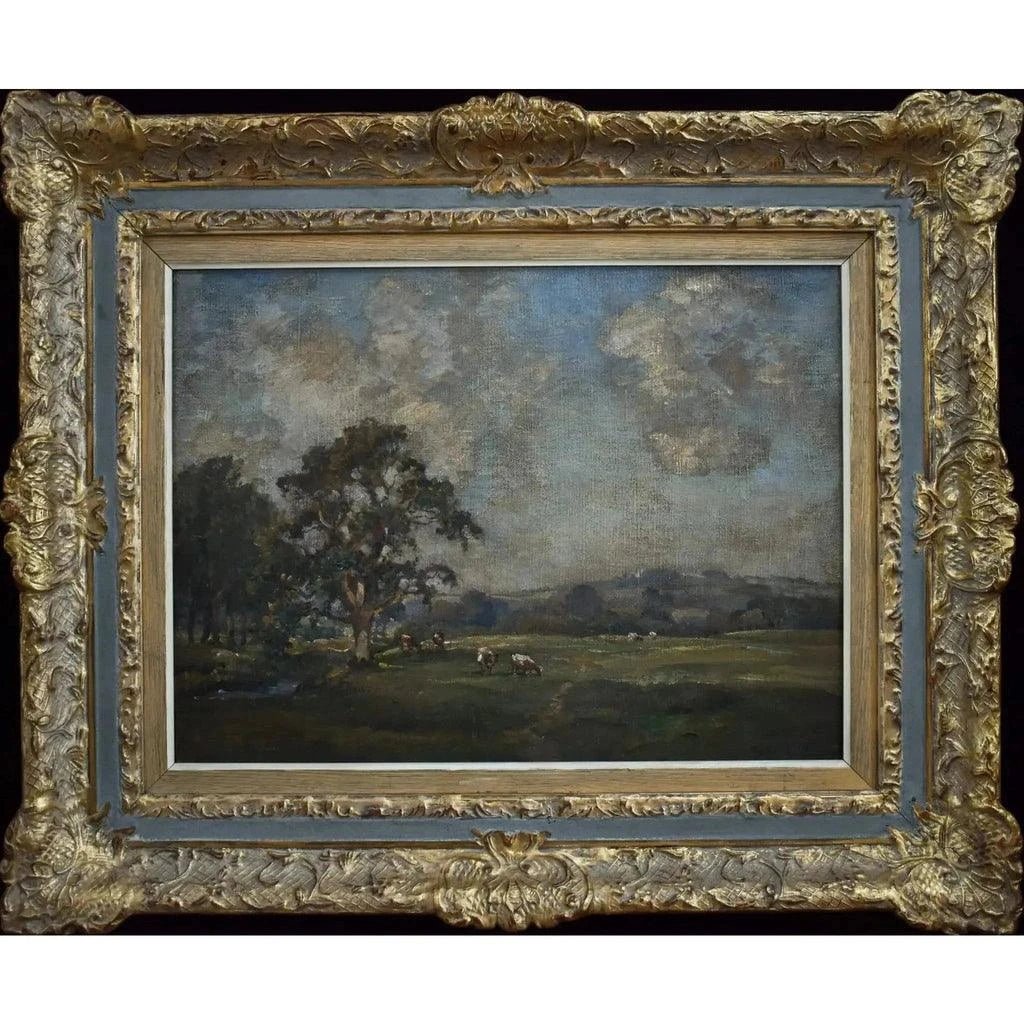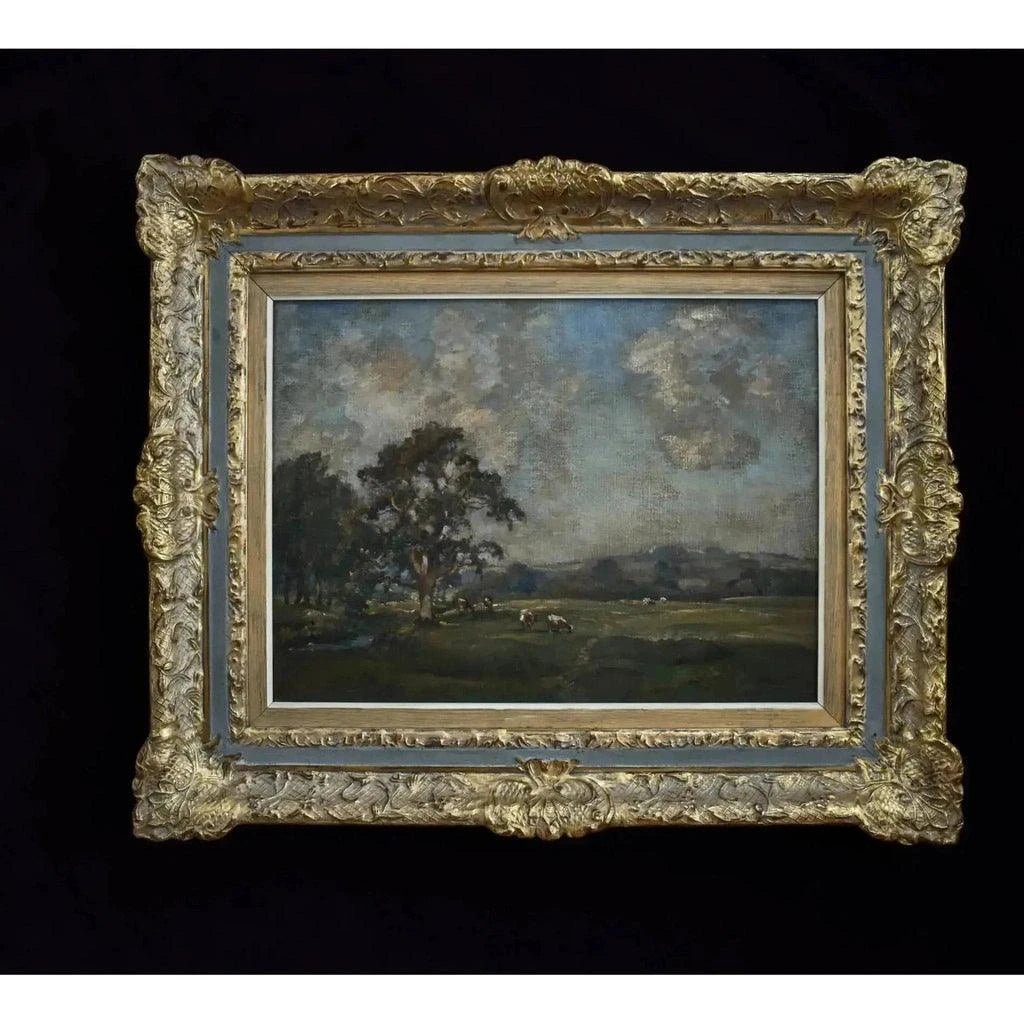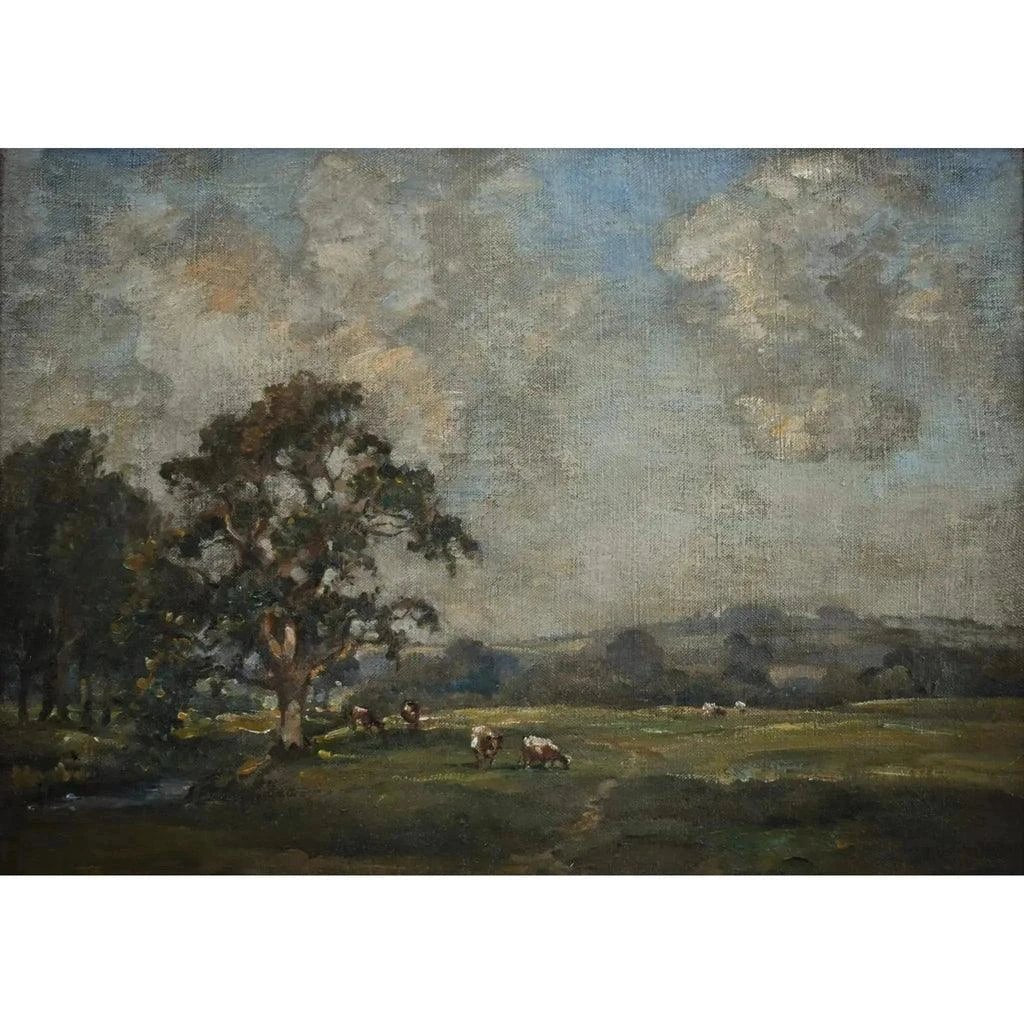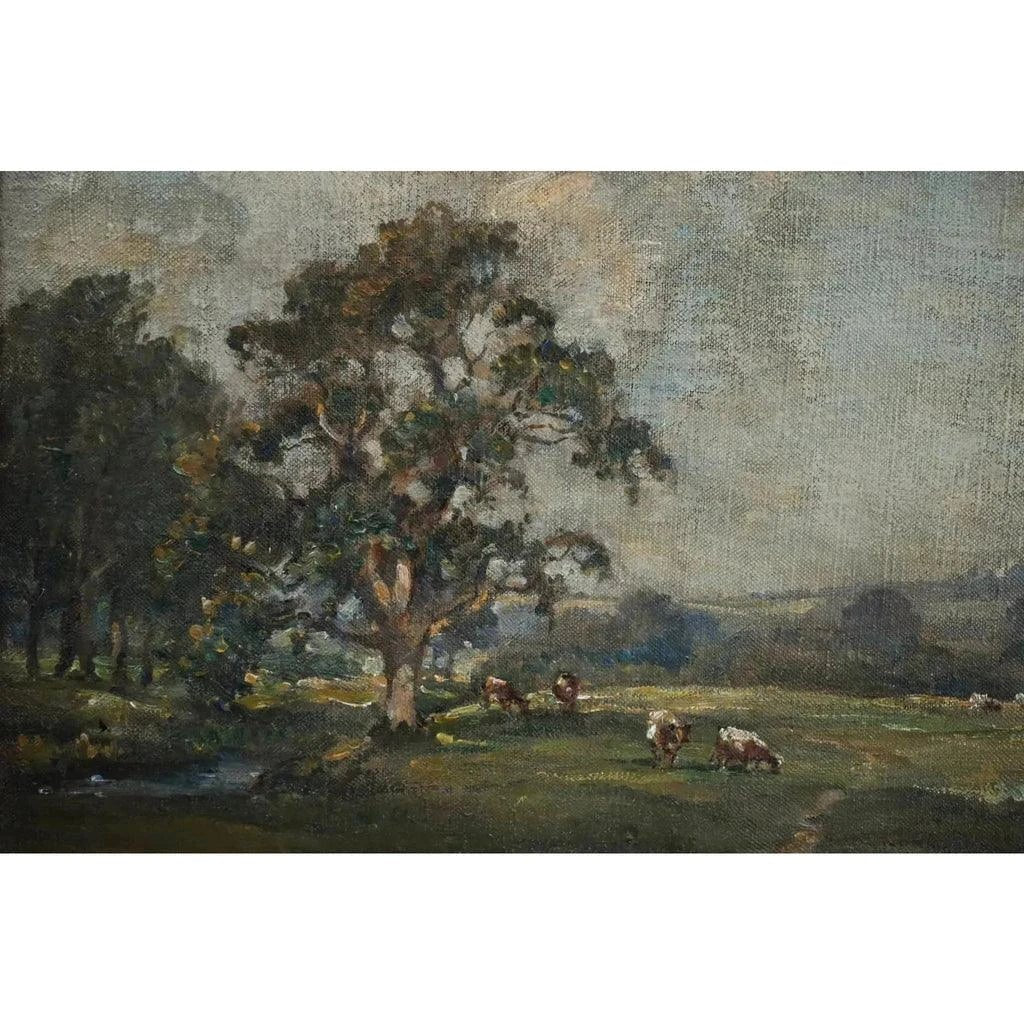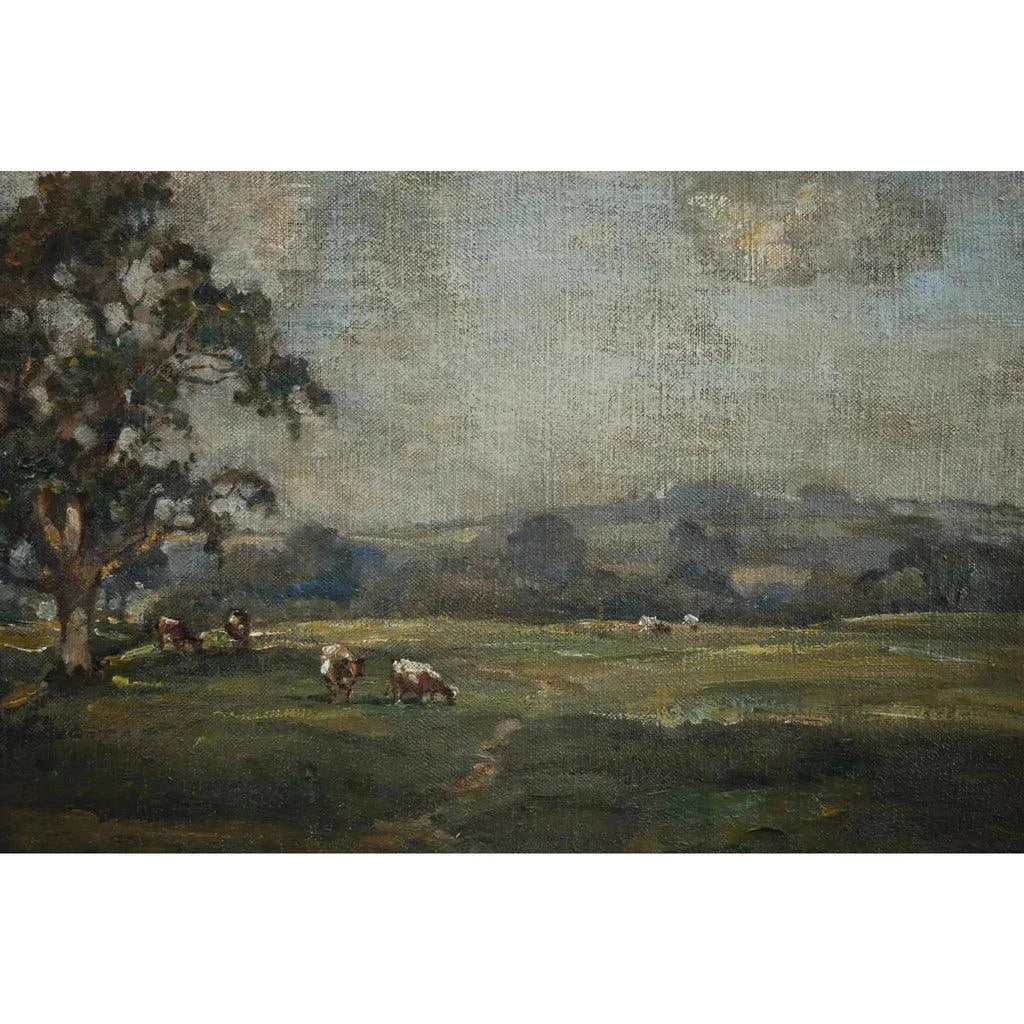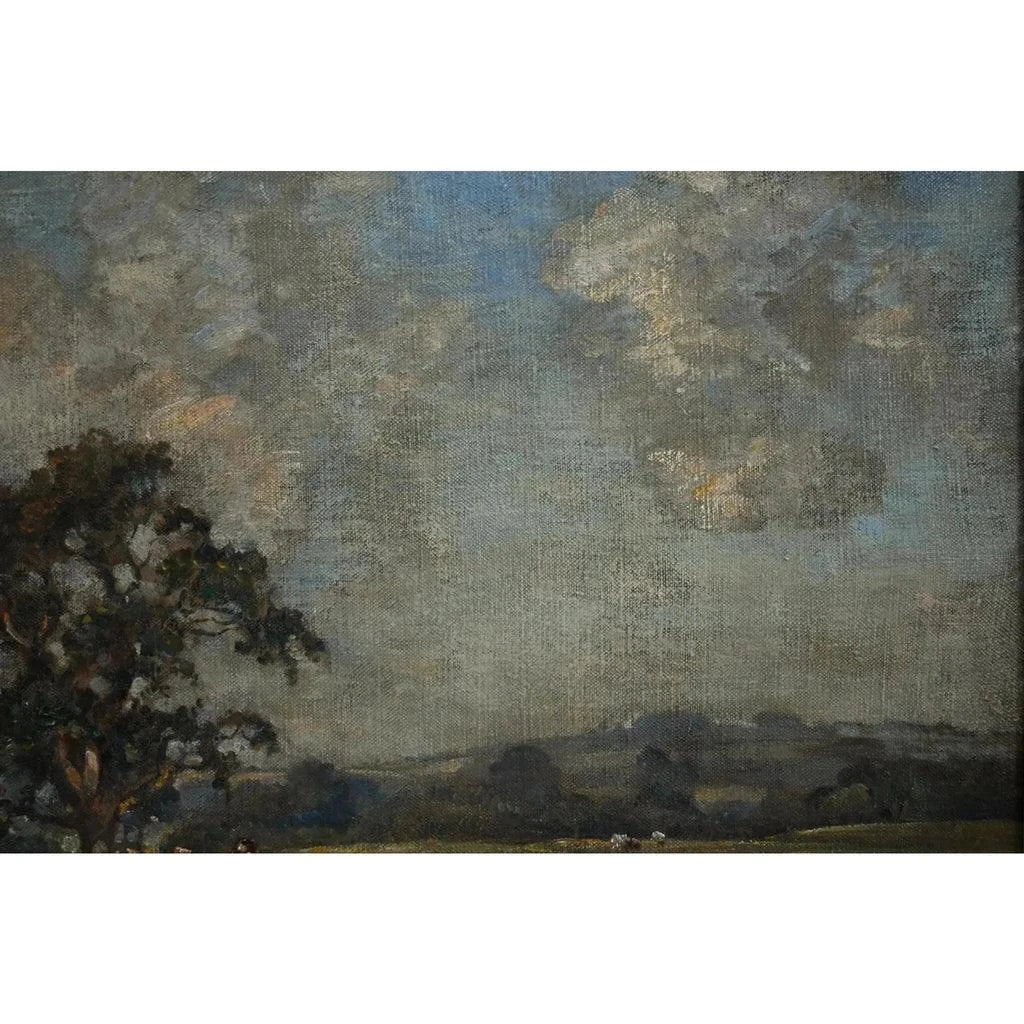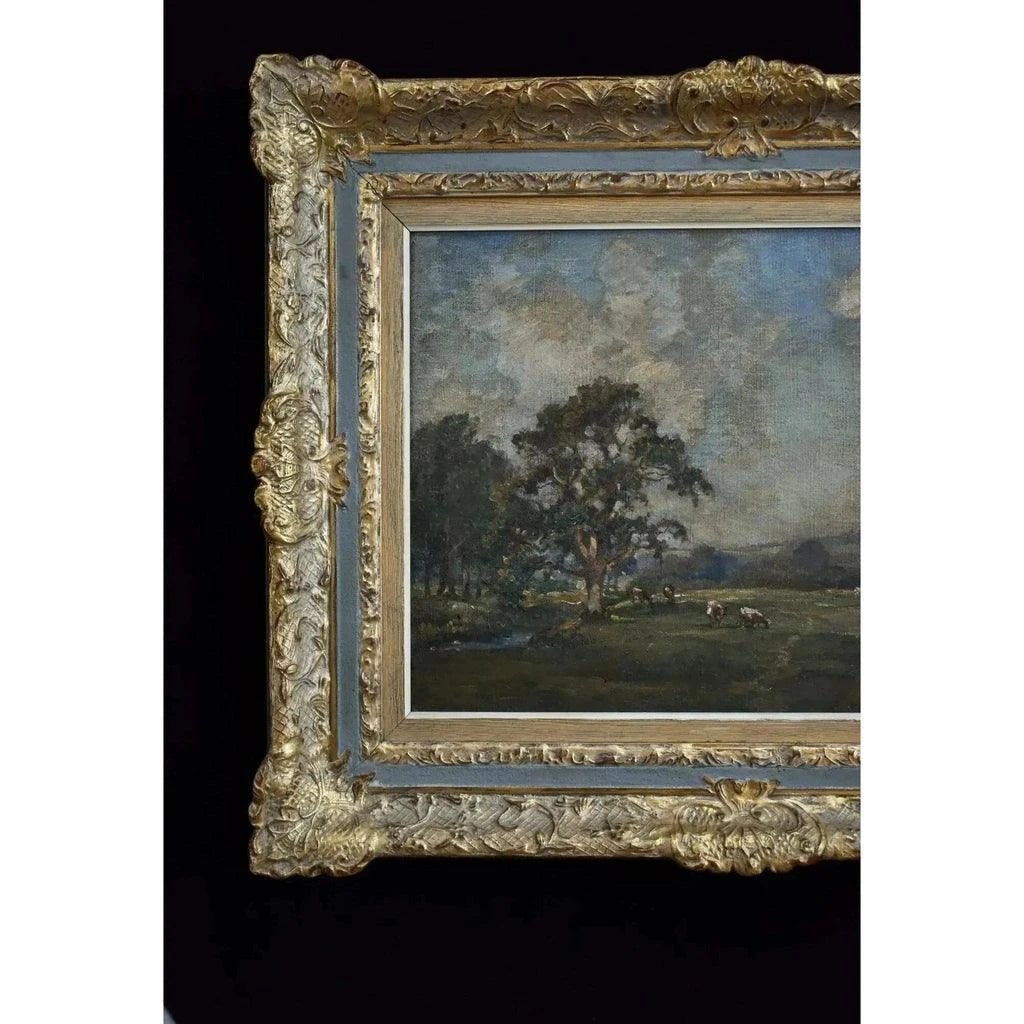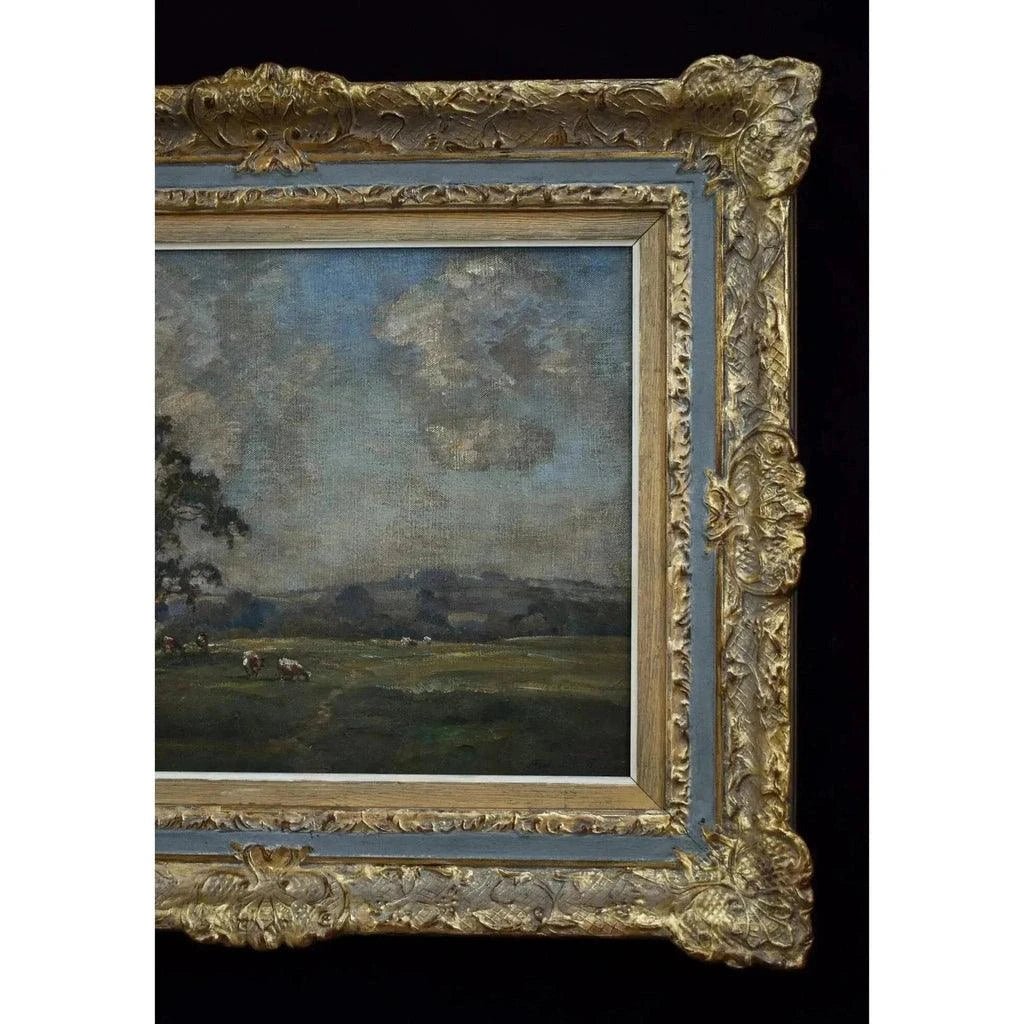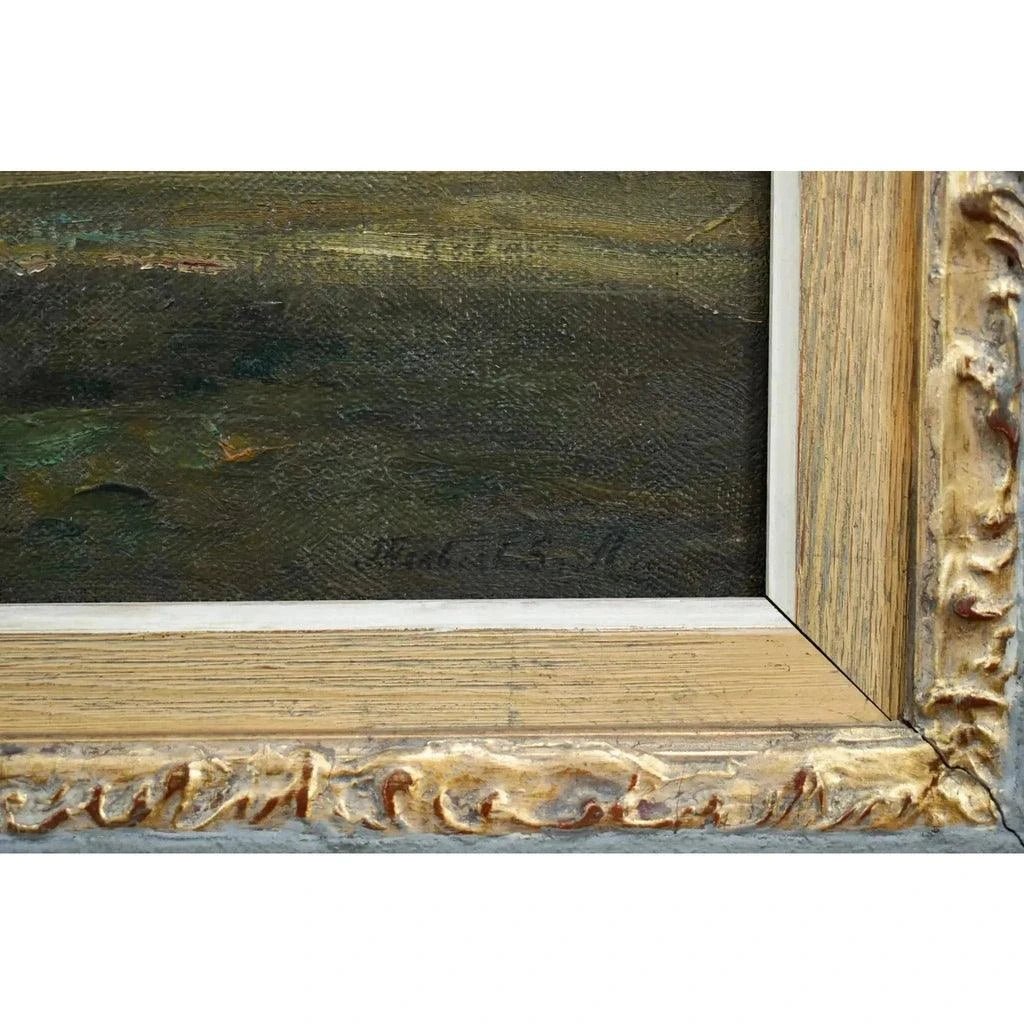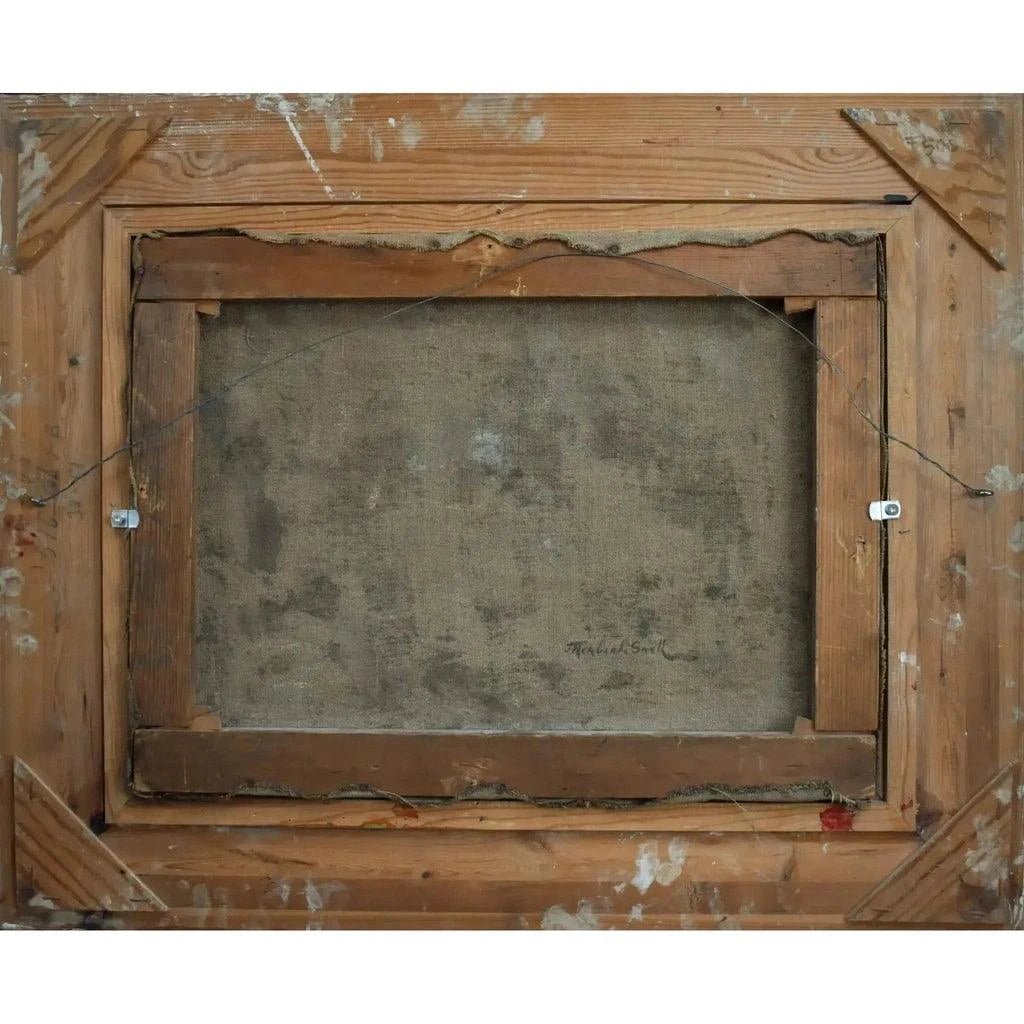James Herbert Snell - Landscape With Cows
James Herbert Snell - Landscape With Cows
Couldn't load pickup availability
Share
This original painting by James Herbert Snell features a landscape painting with a richly detailed, ornate gold frame. The artwork depicts a tranquil rural scene, showcasing a meadow with scattered cows, a large tree in the foreground, and an expansive sky with soft, voluminous clouds. The painterly style emphasizes atmospheric depth and natural beauty, likely reflecting James Herbert Snell's ability to merge realism with impressionistic techniques. Made around 1890, this oil on canvas is signed 'JHerbert Snell' (lower right) and further signed on the reverse, with a richly detailed, ornate gold frame. Both in very good condition.
James Herbert Snell (1861-1935) represents an intriguing figure in British art history, embodying the transitional period between traditional realism and the burgeoning influence of French impressionism. Born in London, Snell honed his artistic skills through formal training at Heatherley’s School of Fine Art in London, as well as studies in Paris and Amsterdam, placing him at the crossroads of diverse artistic influences.
Snell's artistic journey reflects the tension and dialogue between realism and impressionism that defined late 19th and early 20th-century art. Early in his career, Snell was likely influenced by the British realist tradition, which emphasized meticulous detail and fidelity to nature. However, as French impressionism captured the imagination of European artists, Snell began to incorporate its techniques and sensibilities into his work. His later paintings, characterized by a looser brushstroke and a focus on the transient effects of light and atmosphere, reveal this shift. This blend of realism and impressionism imbues his landscapes with a dynamic quality, bridging two important schools of artistic thought.
Snell's life and work were shaped by his changing locales. In the 1880s, he resided in London, a cultural hub for art and innovation. By 1897, he had moved to Glasgow, a city known for its vibrant artistic community and connection to the Glasgow School of painters. In the early 1900s, Snell settled in Tonbridge, Kent, and later in Burnham, Buckinghamshire, each providing inspiration for his landscapes, that captured the attention of diverse audiences, resonating with their blend of traditional craftsmanship and modern sensibility.
Snell's career was marked by significant institutional recognition. He was elected to the Royal Society of British Artists (RBA) in 1890 and the Royal Institute of Oil Painters (ROI) in 1909. These affiliations highlighted his prominence in the British art scene, where he exhibited prolifically—47 works with the RBA and an impressive 118 works with the ROI. His reputation extended beyond these organizations, with 45 works displayed at the Royal Academy and contributions to prestigious exhibitions such as the Royal Cambrian Academy, Royal Hibernian Society, Glasgow Institute of Fine Arts, Walker Art Gallery in Liverpool, Manchester City Art Gallery and Royal Scottish Academy. Notably, his talent earned international acclaim, culminating in a Gold Medal at the Paris Salon in 1923.
James Herbert Snell remains a compelling figure, both for his artistic achievements and for his ability to navigate and integrate the shifting currents of his time. His works serve as a testament to the evolving narrative of British art, offering a window into the complex interplay between tradition and innovation during a pivotal era.
Artist: James Herbert Snell (1861-1935).
Signed in the lower right.
Medium: Oil on canvas.
Condition: Very good condition.
Dimensions: 38 x 51 cm. / 15 x 20 in.
Frame: 60 x 73 cm. / 23 1/2 x 28 3/4 in. Very good condition.
Provenance: Sweden.
